|
|
|
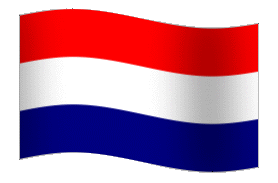 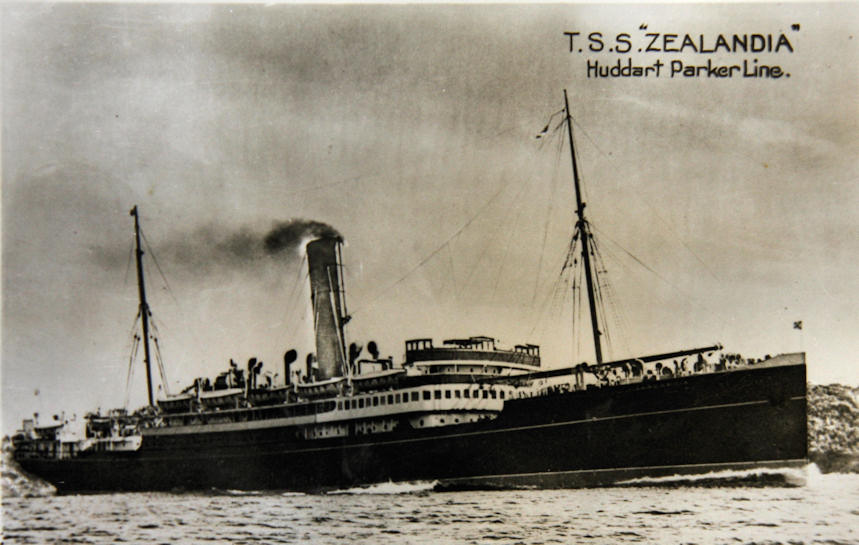 S.S. 'Zealandia' Koepang, West Timor 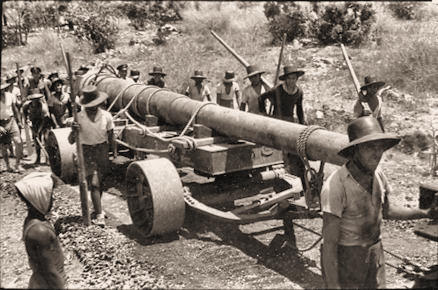 Moving
a 6-inch gun Moving
a 6-inch gun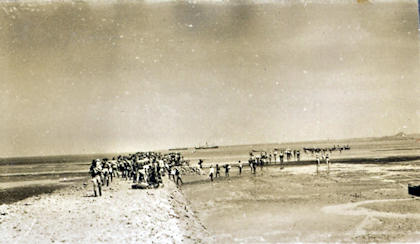 Landing at Usapa Besar 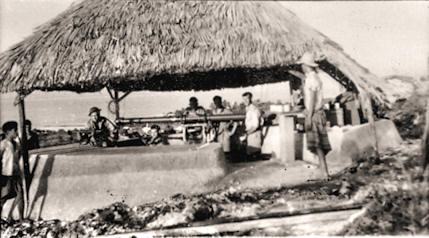 Rangefinder
at Klapalima Rangefinder
at Klapalima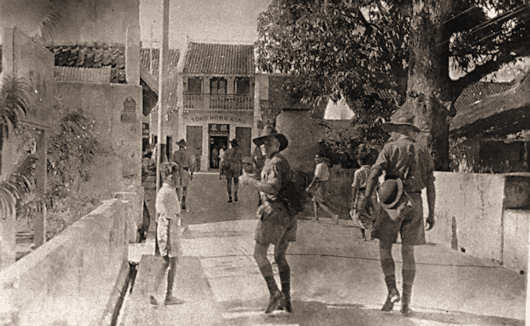 On leave in Koepang 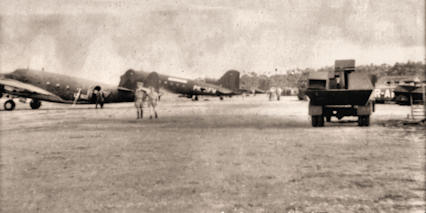 Hudson bombers at Penfui 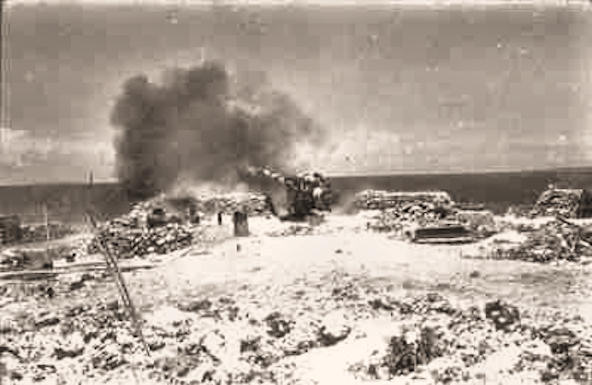 Proofing 6-in.gun, Klapalima 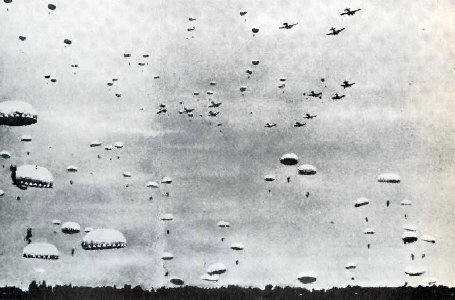 Japanese SNLF paratroops |
DUTCH WEST TIMOR...
With news of Japan's attack on Pearl Harbour, Sparrow Force
was
mobilised and the 2/40th
along with its ancillary units moved to the Darwin wharves to embark
on the 'S.S. Zealandia' and 'H.M.A.S. Westralia'
for Timor.
A go-slow campaign by unionist wharf workers and their refusal to
load munitions saw delays in the ships' departures.
Boxes of medical supplies and radios were dropped heavily into the
holds and damaged while other cases were broken open and pilfered.
2nd Ind. Coy. commandos went onto the wharf and offered to resolve
any problems
physically.
On
Friday morning, 12th
December1941,
the ships entered Koepang Bay and passed Koepang to unload at Usapa
Besar, a few miles east of the town. Here was a shallow beach with
one coral wharf, totally inadequate for offloading all the men and
equipment. Native labourers assisted in ferrying men and equjpment
ashore but with the haste caused by a reported Japanese submarine in
the bay, more critical equipment was damaged.
At low tide it was a 300 yard puddle through mud to reach the
shoreline.
Two 6-inch coastal guns had already been installed by the Dutch at Klapalima
under the supervision of Major A.J.McL. Wilson of the 2/1st Heavy
Battery.
These were retired guns from the H.M.S. 'Hibernia' with
pedestal mounts from the H.M.A.S. Sydney (1), emplaced so
as to
deny Japanese naval bombardment of the airstrip at Penfui. This served as
a refuelling and re-arming point for aircraft on the Darwin to
Singapore route. Penfui became headquarters base for
supplies and operations management after coming ashore, so most of the unloaded stores
were conveyed to Penfui which effectively became the centre for
Sparrow Force operations on Dutch West Timor.
The Dutch had undertaken to provide quarters, water and ablution
blocks at the base however facilities were far from finished and not
satisfactory. Even the mounting of the big guns at Klapalima was
faulty and they were moved farther
Arriving during the wet season and with poor sanitation, flies,
mosquitoes and a tropical environment, the men were affected by
malaria, dysentery, cholera, typhoid, dengue fever, tinea and
tropical ulcers.
Japanese air reconnaissance commenced on 25th January and the first attack by fighters occurred the following day. From this point on there were almost daily attacks by fighters, bombers and seaplanes on Sparrow Force positions, the Dutch harbours and shipping. Poor communications with the loss of radio sets at Darwin and Usapa Besar hampered the defence and was more critical after the Japanese landings.
Reinforcement and expansion of Sparrow Force was proposed and a new
commanding officer, Brigadier Veale arrived on 12th February. The
79th British anti-aircraft troops arrived on the 16th February and
more Australian infantry with U.S.
artillery were due to arrive in mid-February however the convoy was
bombed en route and returned
to Darwin.
The Japanese invaded Timor after midnight on 19/20th February 1942.
Their
three-pronged landing at the mouth of the Paha River was unopposed
and the big guns at Klapalima and infantry beach defences never
fired a shot in anger. On the
20th February after it was known that a large Japanese
force had landed behind them, along with the S.N.L.F. paratroops
drop east of Babao, the big guns were rendered and 2/1st
gunners, engineers and signals left their position to move
north-east and join up with the infantry companies.
With ammunition, food and water running low and surrounded on three
sides by Japanese during the night,
The men were marched back to the coast to the former A Company
|
|
Copyright © 2012-2013 Please report any site problems/questions such as broken links here. |
|